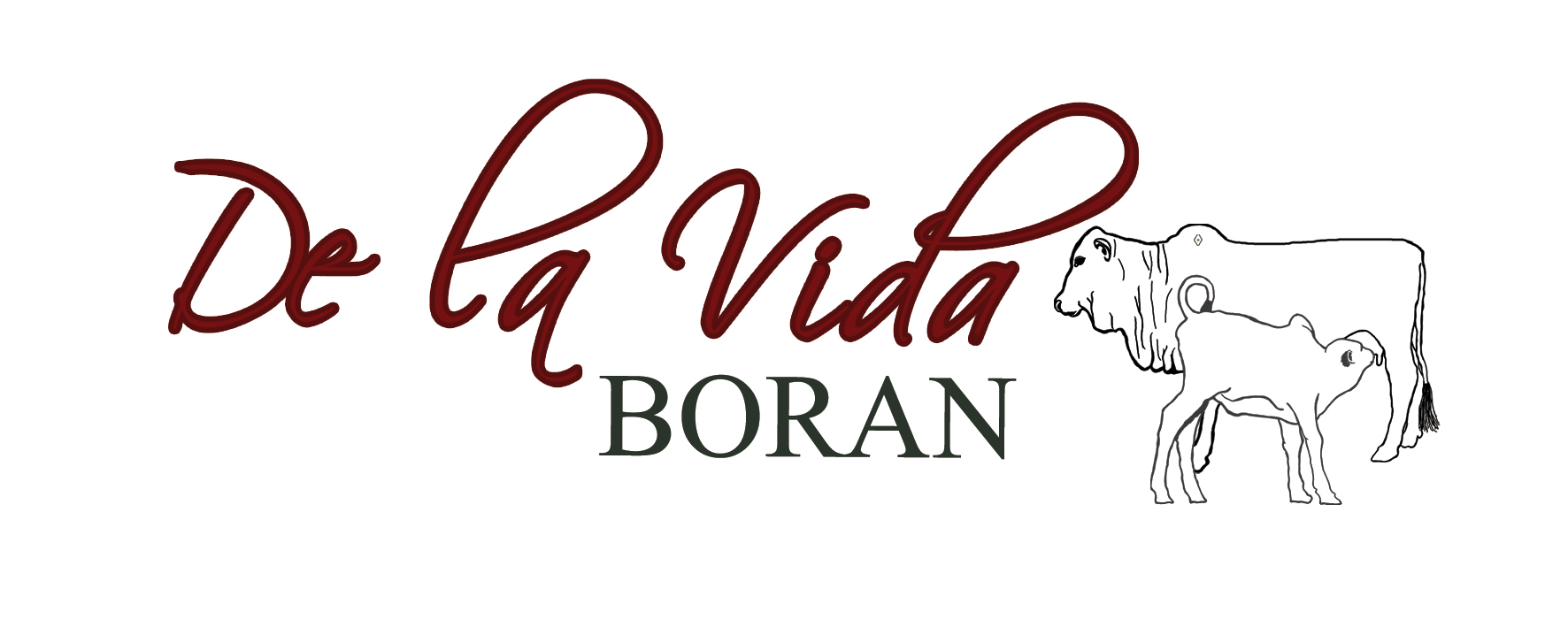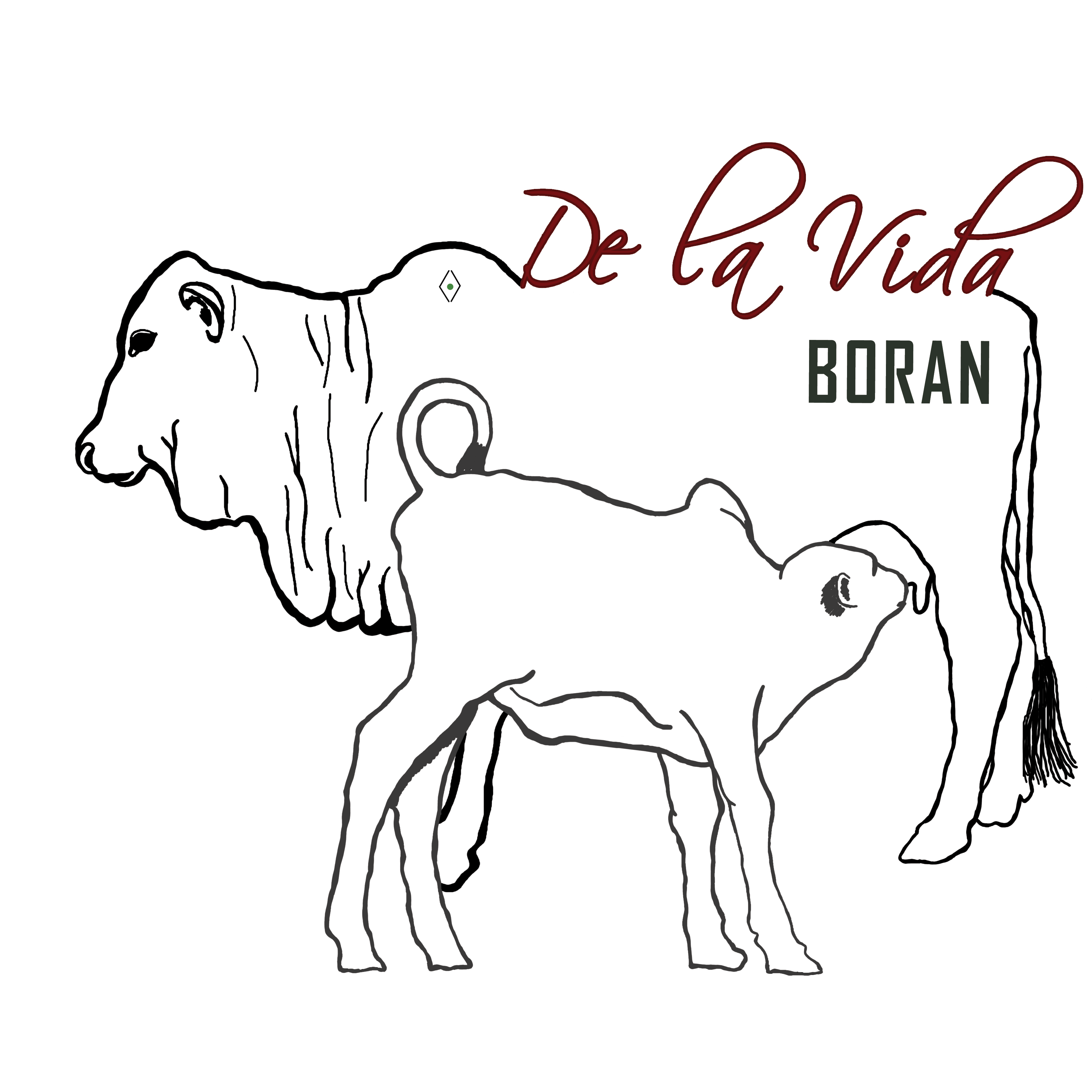![]()

A & M UNIVERSITY TEXAS - RESEARCH
ANNUAL STATION REPORT TO S-277
TEXAS A&M UNIVERSITY / TEXAS AGRICULTURAL EXPERIMENT STATION

"Comparison of tropically adapted breeds: The Texas A&M Experiment Station at McGregor has been studying two new breeds of tropically adapted cattle; the Boran and the Tuli. The Boran is a Bos Indicus breed and the Tuli is a Sanga type. Both originated in East Africa and are smaller than the Brahman. Sanga cattle are, however, thought to be genetic intermediaries, with some Bos indicus and some Bos taurus. The Tuli probably have little Bos indicus.
Comparisons are in progress of Boran, Tuli and Brahman F1 females out of either Angus or Hereford cows. Out of the first three calf crops, the first by Angus sires and the next two by Brangus sires there was little difference in birth weights but weaning weights differed considerably with Brahman F1's weaning at 488 lbs, Boran at 430 lbs and Tuli at 395 lbs. However, Boran was the highest percentage calf crop weaned at 80, then Tuli at 77 and lowest was Brahman at 70 - a larger differential than for weaning weights.
Work at the US Animal Research Centre MARC, Nebraska, essentially mirrors these results. The Boran may offer possibilities as a competitor for the Brahman cross, especially to reduce the cow size and increase the "calf crop weaned" percentage. The MARC also found the Boran to have a higher marbling content than the Brahman, so improvements could be made here too.
DATE: June 1, 2001
I. PROJECT TITLE:
Breeding to Optimise Maternal Performance and Reproduction of Beef Cows in the Southern Region USA
II. AGENCIES AND PRINCIPAL INVESTIGATORS:
Agency: Texas Agricultural Experiment Station
Principal Investigators: J.O. Sanders, D.K. Lunt, K.L. Key, A.E. Ducoing
III. OBJECTIVES:
To evaluate reproduction and maternal performance of top-cross cows sired by tropically adapted sire breeds in subtropical and temperate regions of the U.S.
IV. In 1982 - 1985, Hereford cows were artificially inseminated to Angus
(n=10), Gray Brahman (n = 11), Gir (n=6), Indu-Brazil (n=10), Nellore
(n=10) and Red Brahman (n=10) bulls. The F1 females from these matings were retained and are under evaluation for lifetime cow productivity.
These F1 females were born in the fall and calved for the first time in the spring, when about 30 months of age. They have been maintained in a spring calving season throughout their lifetimes. All females of the different crosses have been mated to the same bulls, by natural service, each year.
In 1991 and 1992, both Hereford and Angus cows were artificially inseminated to Tuli (n=9), Boran (n=8) and Brahman (n=15) bulls. The F1 females from these matings were also retained for the evaluation of lifetime
productivity. They were born in the spring and were given the opportunity to calve in the spring at two
years of age. They have been also been maintained in a spring calving season throughout their lifetimes,with
females of all crosses mated to the same bulls, by natural service, each year.
In addition, in 1996 and 1997, Angus cows were mated by both natural service and artificial insemination to Brahman and Nellore bulls. The F1 females from these matings have also been retained to evaluate lifetime productivity, but they are part of a heterosis retention study, where they are being used to produce advanced generation crossbreds. The emphasis in this study will be on comparing productivity of females of different generations with the same breed composition, so the breed of service sire will not be the same for the two types of F1 cows in at least some years.
V. PROGRESS OF WORK:
Of the F1 cows born from 1982 to 1985, calves have been produced from 1985 to 2001. Means by breed of cow's sire for birth weight and weaning weight are shown in Table 1. Several different sire breeds have been used, and breed of sire of calf is almost completely confounded with year. Within a given year, all cows were bred to the same bulls. Calves out of the Bos indicus sired cows were lighter at birth and heavier at weaning than those out of the Angus sired cows.
Among the Bos indicus sired cows, birth weights were lightest for calves out of Gir sired cows. In the F1 phase of this study, the Gir sired calves had the lightest birth weights of the different Bos indicus sire breeds. There were no significant differences in weaning weight for calves out of the different types of Bos indicus sired F1 cows.
Means for mature weight and height of the F1 cows are shown in Table 2. All of the Bos indicus sired F1 cow types were heavier and taller than the Angus- Hereford crosses. Among the Bos indicus crosses, the Gir and Nellore crosses were lighter than the Brahman and Indu-Brazil crosses.
Measures of cow fertility of the F1 cows and survival rates of their calves are shown in Table 3. Pregnancy rate and calf crop born were higher for the Bos indicus sired cows than for the Angus crosses. Calf survival and calf crop weaned were highest for the Nellore sired cows and next highest for the Gir crosses. Calf survival and calf crop weaned were lowest for the Indu-Brazil crosses.
Survival rates of the different types of F1 cows to 14 years of age under the actual and three different imposed culling policies are shown in Table 4. Under the actual policy, until about 12 years of age, cows were generally culled if they were diagnosed as open by rectal palpation and had failed to wean a calf in the current or any previous year. After about 12 years of age, cows were culled if diagnosed as open or if they failed to wean a calf, without regard to previous record. Under all of the culling methods, Nellore crosses had the highest survival rates and Gir crosses had the next highest rates.
For the F1 cows born in 1992 and 1993, and sired by Boran, Brahman and Tuli bulls, calves have been produced from 1994 to 2001. As with the cows in the Bos indicus breed comparison, several different sire breeds have been used, and breed of sire of calf is almost completely confounded with year. Within a given year, all cows were bred to the same bulls. Means for birth weight and weaning weight for calves out of the F1 cows are shown in Table 5. There were no significant differences in birth weight due to sire breed of the dam. Calves out of Brahman sired cows were heaviest at weaning, and those out of Boran sired cows were intermediate.
Means for cow weight are shown in Table 6. The Brahman sired cows are about 60 kg heavier than the Tuli- and Boran sired cows. Calf crop born and weaned for the different types of F1 cows are shown in Table 7. Boran crosses have had the highest calf crop born and weaned and Tuli crosses
have been intermediate.
The Brahman / Angus F1 heifers in the heterosis retention study that were born in 1997 were mated to
Brahman / Angus F1 bulls in 1998 and 1999 to produce F2 calves; those born in 1998 were bred to Angus bulls in 1999.Those of both ages were mated to 1/4 Nellore-3/4 Angus bulls in 2000. The Nellore / Angus F1 heifers that were born in 1997 were mated to Angus bulls in 1988, and those born in both 1997 and 1998 were mated to 1/4 Nellore-3/4 Angus bulls in 1999 and 2000.
VI. SUMMARY:
Of the F1 cows born from 1982 to 1985, productivity and longevity have been highest in the Nellore crosses. Much of their superiority has been due to the higher survival rate of their calves. The higher survival rate of their calves appears to be due, at least mostly, to their superior udders.
Of the cows born in 1992 and 1993 and sired by Tuli, Boran and Brahman bulls, productivity has been highest in the Boran cross cows. Although they have also had higher calf crop born than the Brahman and Tuli crosses, much of their advantage in calf crop weaned has been due to higher survival rates in their calves.
VII.USEFULNESS OF FINDINGS:
Cows sired Nellore, Gir and Boran bulls and out of cows of the British beef breeds have been found to be extremely productive under central Texas conditions. Their superiority has been due largely to higher survival rates of their calves.
VIII. WORK PLAN FOR NEXT YEAR:
Evaluation of calf performance and cow productivity will be continued. Both the cows in the Bos indicus breed evaluation and those in the Tuli / Boran / Brahman comparison are currently being bred to 3/8 Nellore-5/8 Angus bulls. The Brahman /Angus F1 females in the heterosis retention study that were born in 1997 and 1998 are being mated to 1/4 Brahman-3/4 Angus bulls. The Nellore /Angus F1 cows that were born in 1997 and 1998 are being mated to 1/4 Nellore-3/4 Angus bulls.
IX. PUBLICATIONS:
D. G. Riley, J. O. Sanders, R. E. Knutson and D. K. Lunt. 2001.
Comparison of F1 Bos indicus / Hereford cows in central Texas I.
Reproductive, maternal and size traits. J Anim. Sci. 79:1431-1438.
D. G. Riley, J. O. Sanders, R. E. Knutson and D. K. Lunt. 2001.
Comparison of F1 Bos indicus / Hereford cows in Central Texas.
II. Udder, mouth, longevity and lifetime productivity.. 79:1439-1449.
Riley, D. G., L. B. Hager, J. O. Sanders, R. K. Miller and D. K. Lunt.
2000. Comparison of Warner-Bratzler shears of F1 Bos indicus / British steers produced by one Nellore and 15 Brahman bulls. J. Anim. Sci. 78(Suppl. 1):59(Abstr.).
Ducoing, A.E. and J.O. Sanders. 2001.
Evaluation of F1 cows sired by Brahman, Boran and Tuli bulls for birth and weaning weight, calf crop born, Calf survival and calf crop weaned. . American Society of Ani.Sci., Southern section
Abstracts,\ p. 6.
|
